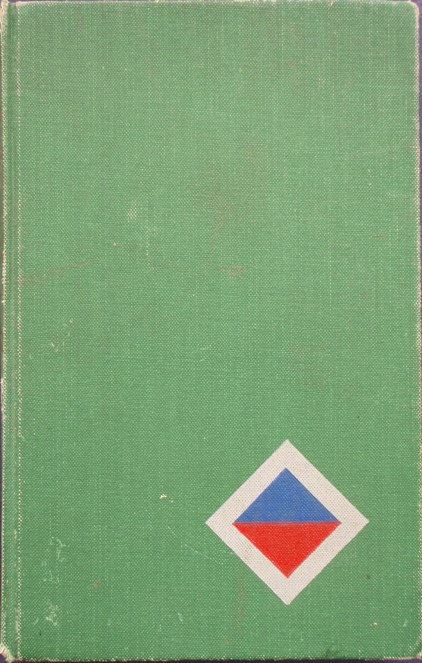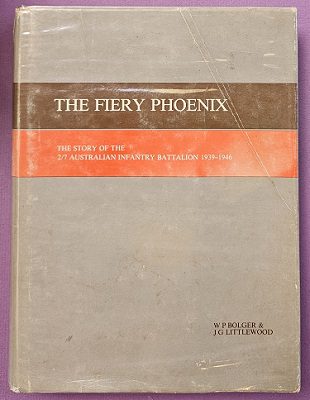Description
Title: Etched in Green : The History of the 22nd Australian Infantry Battalion 1939 – 1946
Author: Macfarlan, Graeme
Condition: Very Good
Edition: 1st Edition
Publication Date: 1961
ISBN: N/A
Cover: Hard Cover without (missing) Dust Jacket – 262 pages
Comments: The detailed history of the 22nd Infantry Battalion during World War II. Now a very rare book and highly sought after by collectors and military history historians.
After the First World War the defence of the Australian mainland lay with the part-time soldiers of the Citizens Military Force, also known as the Militia. The Militia was organized to maintain the structure of the First AIF and kept the same numerical designations. When the 22nd Infantry Battalion was originally raised in 1921 it was based in Melbourne and drew most of its personnel from Richmond. In 1930 the 22nd merged with the 29th Infantry Battalion to form the 29th/22nd Infantry Battalion. On the eve of the Second World War in August 1939 the 29th/22nd split. The 22nd was reformed and had its headquarters in Leongatha in South Gippsland. Thus, the 22nd was known as the “South Gippsland Regiment”. It was initially part of the 3rd Division’s 4th Brigade.
The 22nd held numerous training camps during the start of the war. However, with Japan’s entry and run of victories in South East Asia and the Pacific, the battalion’s training intensified. In March 1942 the 4th Brigade, composed of the 22nd, 37th/52nd and 29th/46th Battalions, was sent to Queensland. It spent just under a year in Queensland, first at Warwick and then Caloundra, Mount Gravatt, and in mid-September the Maroochydore–Mooloolaba area.
In March 1943 the 4th Brigade was transferred to Milne Bay in Papua and spent the next 16 months in the islands. The 22nd carried out intensive jungle training, conducted patrols, and was used as a source of labour for work parties. In March the 4th Brigade joined the 5th Division, later becoming part of the 9th Division, with which it saw action. The brigade returned to the 5th Division later in the war.
In September the 22nd and the rest of the 4th Brigade left Milne Bay for Lae in New Guinea. Moving by landing craft, the brigade was to protect Red Beach and support the 9th Division, in preparation for the Huon Peninsula campaign. The 22nd’s role was to advance from Lae, follow the coast, and cross the mountains to Finschhafen.
The 4th Brigade saw extensive service in New Guinea. After patrolling the rugged country behind Sattelberg, from December to April 1944, the 4th Brigade pushed on to Gusika, Lakona, and Fortification Point. Between April and August the brigade garrisoned the Madang area and carried out numerous patrols.
In September the brigade returned to Australia and, after some leave, regrouped at Strathpine in Queensland for further training. As was common by that time the 22nd was reinforced with men from all states, not just Victoria. It soon returned to the islands, this time on New Britain in January 1945.
Rather than carry out a major offensive against the Japanese, the much smaller Australian force used active patrolling to confine the Japanese to Rabaul and the Gazelle Peninsula. The 5th Division’s two other brigades, the 6th and 13th, arrived first on New Britain, in November. The 6th carried out the most of the Australian advance, establishing the line across the Gazelle Peninsula. In January 1945 the 4th Brigade arrived at Wunung Bay, on the southern shore of Jacquinot Bay, where it was based for the next 12 months. However, it “soon became apparent”, wrote the 22nd’s unit historian, “that this was to be an inactive period so far as operations were concerned.” The Japanese threat to Wunung Bay was minimal and the battalion spent most of its time in training, as well as patrolling.
Following Japan’s surrender, the 4th Brigade moved into Rabaul as part of the occupation force. With the war over, the ranks of the 22nd gradually thinned, as men were discharged or transferred. By March 1946 most members of the battalion who sailed to New Britain the previous year were either discharged or awaiting discharge in Australia. The 22nd was disbanded in June.
Includes Roll of Honour





